We love sweets, as you probably already know, but we must stay healthy too… In our sweet trip to Lake Plastiras we visited quaint villages, monasteries, waterfalls, went hiking and tried outdoor activities, learned the area’s history, discovered Cornelian cherries (Cornus mas fruit) and tried authentic liqueur and jam made with this great Greek superfood.
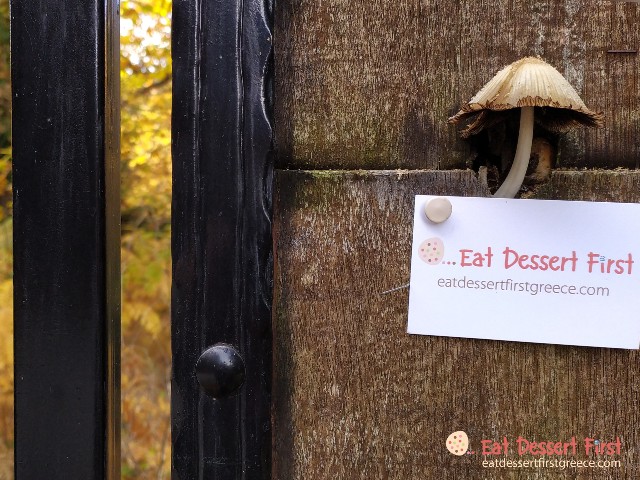
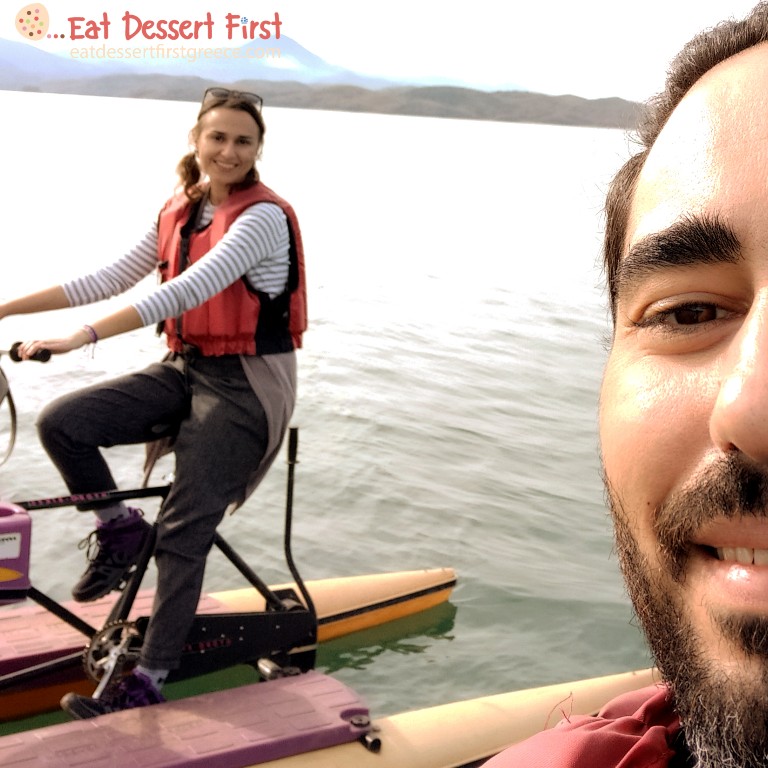
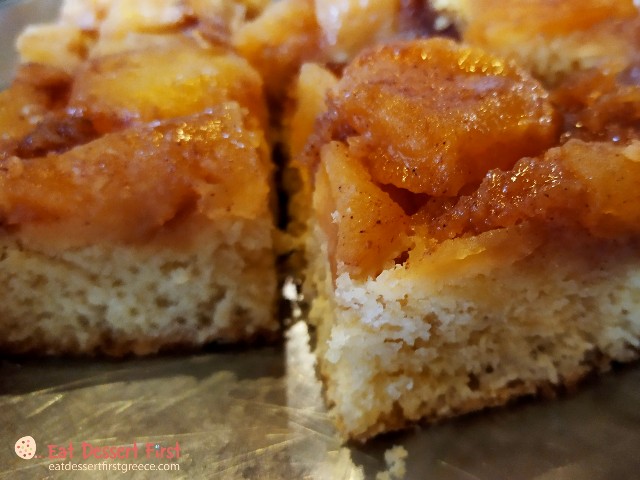
We stayed in one of the beautiful villages of Plastiras Lake, Pezoula village with its stone walls, tiled rooftops and narrow streets. The lake and its villages belong to the Nevropolis plateau, in Karditsa regional unit. The region was called Nevropolis since Antiquity, because of the many deer that lived in the area (nevros meant newborn deer in Ancient Greek).

The surrounding mountains and little villages create a dreamy scenery that soothes the eye and clears the mind. Pezoula is one of the many picturesque villages among lush green -with red autumn brushes- nature, with a magical view of the lake and the mountains… The settlement was built on the riverbanks of a stream of Megalos Potamos, at an altitude of 900 meters.

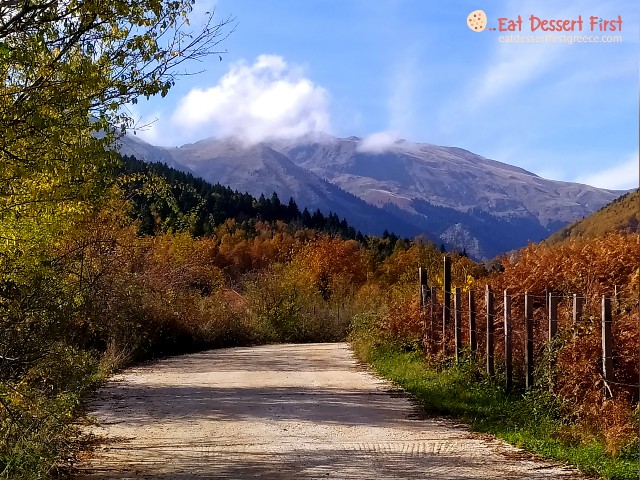
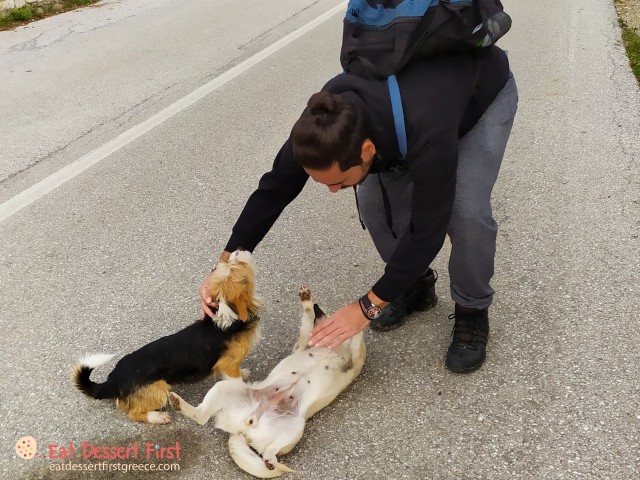
Records of the existence of Pezoula exist since the 16th century. As we learned, in the middle of this century Holy Martyr Saint Seraphim, Archbishop of Fanari and Neochori was born there. Saint Seraphim offered a lot to the Orthodox Church and the enslaved Greeks with his preaching in Agrafa region, causing the hatred of the Turks. His remains are kept in the Monastery of Panagia Koroni in Agrafa, where the Saint lived as a monk.
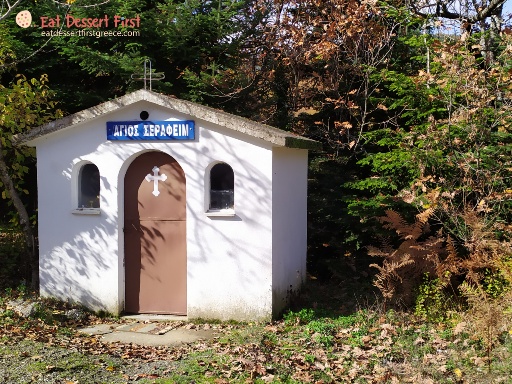
The Holy Monastery of Panagia Koroni in Agrafa stands at 800 meters altitude, with a panoramic view of the Thessalian plain. It is dedicated to the Birth of Virgin Mary (Panagia is Virgin Mary in Greek). We read that the monastery probably owes its name -Panagia Koronis- to its position, like a crown over the plain (korona means crown in Greek). It was built in the 12th century, when an icon of Virgin Mary was found there. During the Turkish occupation a secret school operated in the monastery. In 1943 it was set on fire by the Germans and many rare manuscripts and relics were destroyed. An icon of Panagia of Pammakaristos got saved from the fire. Today the monastery is open to the public and we are very happy to have visited it.

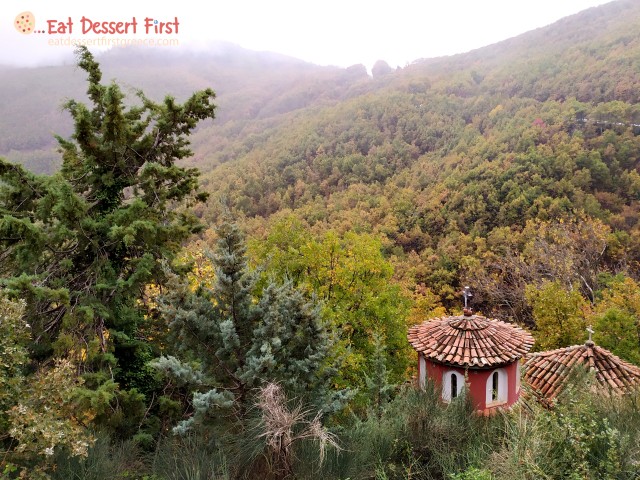
On the way from the Holy Monastery to Pezoula we passed through Messenicola village. It is quite known, because Messenicola Black wine variety is produced there, a unique red wine. We read in an interview of producer George Karamitros that in the 15th century a noble Franc came to the village, named Monsieur Nicolas. He recognised the value of this particular local wine variety and dedicated his life to cultivating it. His contribution to the development of winegrowing in the region led the residents to honour him by giving his name both to the village and the variety.
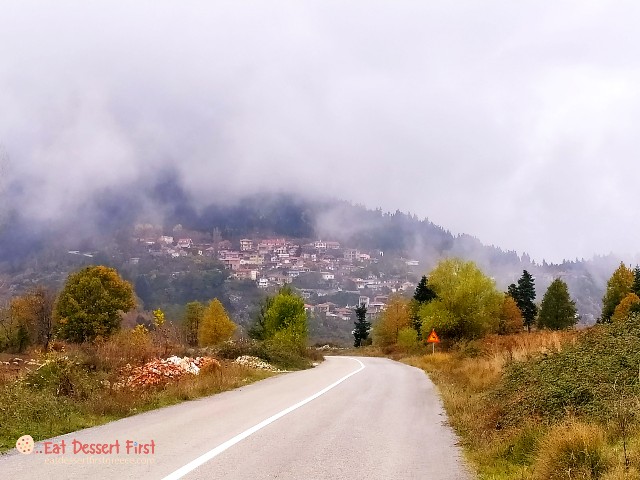
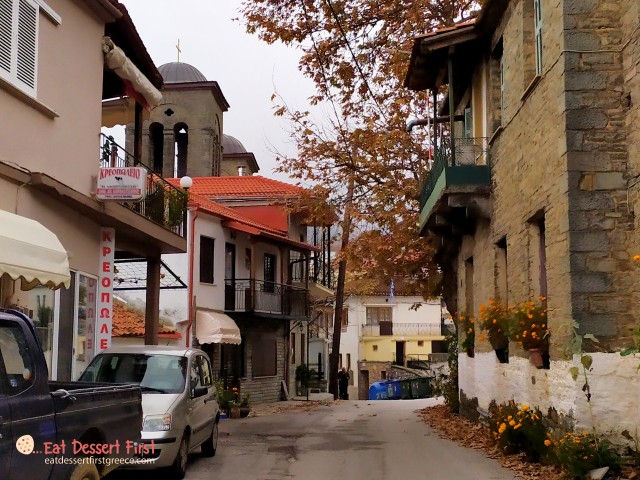
Messenicola variety is produced exclusively in this region and is characterised with Designation of Origin of Superior Quality (part of the PDO Protected Designation of Origin distinction for the historical winegrowing zones of Greece). We were told that this particular wine goes great with apples and pears… and immediately poached pears came to our minds, a festive sweet, as Christmas is coming!
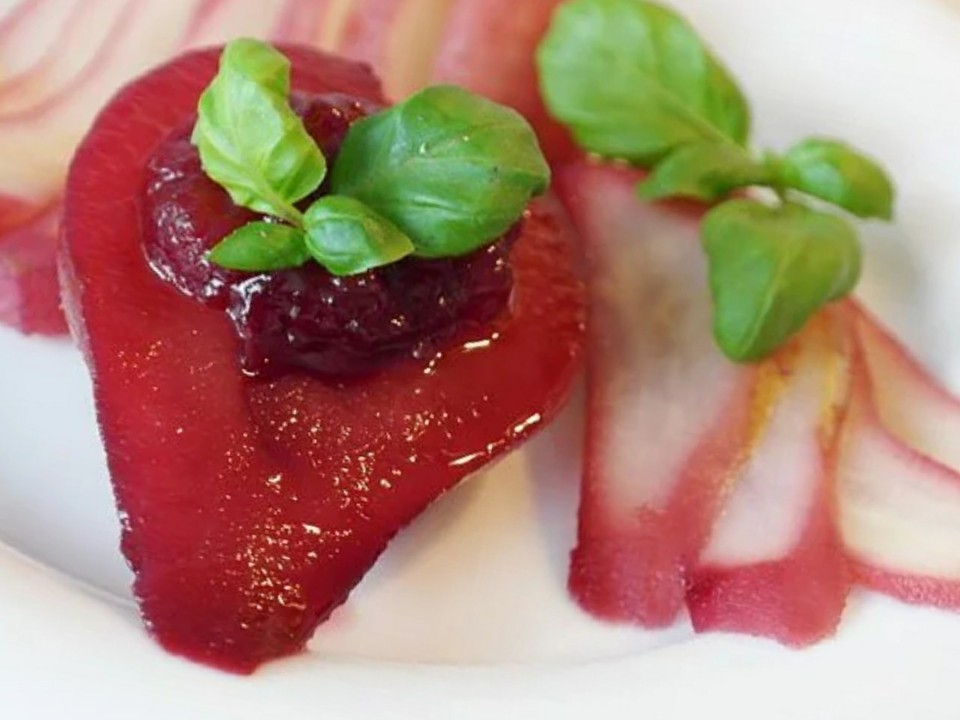
Driving around the region is nice, as we can explore many sites, but what really makes us happy is discovering places on foot… We take example from the locals, who pick fresh ingredients from the surrounding woods to prepare their traditional dishes.
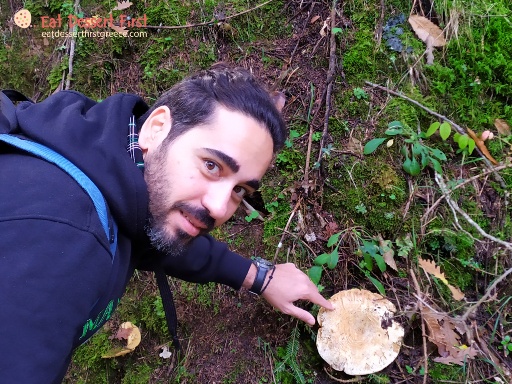
Hiking through the forest towards the lake, we got surrounded by fir trees, chestnuts and oaks and breathed fresh air that our lungs miss so much. We had been told about the Cornus mas trees that grow there, and when we found them we got really excited.


Cornus mas trees are widespread in the Mediterranean. Their fruits, called Cornelian cherries, are small, round and red and were known since Antiquity. We even read that they are first mentioned in Homer’s Odyssey: goddess Circe gave them to Odysseus’ crew as food, after she had turned them into swine of course. Which means she fed them Greek superfoods…

We noticed that Cornelian cherries are often confused with cranberries, but they come from different plants. Cranberries are the fruits of evergreen shrubs that grow in Northern America and they are imported to Greece. On the other hand, Cornus mas trees are Greek, deciduous plants that grow in mountainous areas of Northern Greece. They have recently started to get cultivated in garden nurseries as well.
Cornelian cherries are also more nutricious than cranberries. As scientific research shows, they have the highest vitamin D content and the highest antioxidant activity, compared to the superfoods we are used to, raspberries, blueberries and blackberries. They also have high potassium content, similar to banana and kiwi. A tiny nutritional treasure waiting for us by the forest path, as long as we make a small effort to look for it.
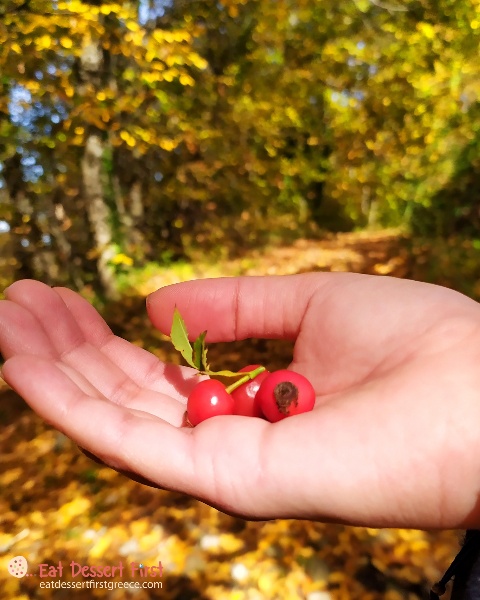
We heard all that and tried to eat them straight away… but they tasted king of sour… Luckily, Cornelian cherries make delicious liqueur and jam, which are beneficial to our health too. As the School of Agriculture of Aristotle University of Thessaloniki has proven, their nutritional and medicinal properties don’t get lost when transformed into other preparations, such as distillate or liqueur.

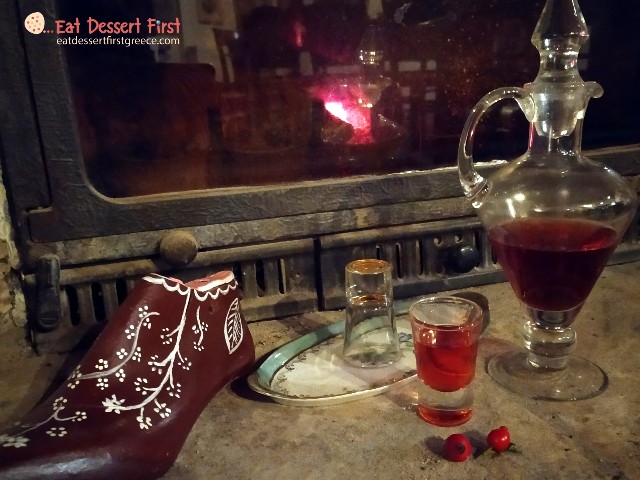

Except for eating healthy, it is also very important to exercise, as much as one can and has time for. Only this way can we indulge in our beloved desserts without remorse! Eat Dessert First team has the following philosophy: when we want to eat our sweets, we compensate with a sport activity.
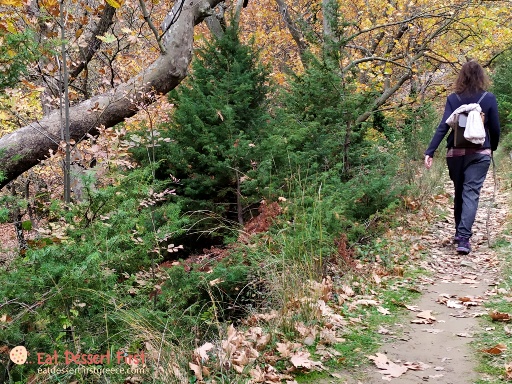
For example, we try to walk at moderate to vigorous pace for one to one and a half hours a day. Walking is a low-impact and simple type of exercise. Although it is that easy, it provides a lot of benefits to our body, mind and soul: it slims down, reduces the risk of chronic diseases, improves our mood, cleanses our minds. And those are only some of its advantages. Research has shown that fast walking for half an hour a day can significantly reduce the chance of developing 24 different diseases!
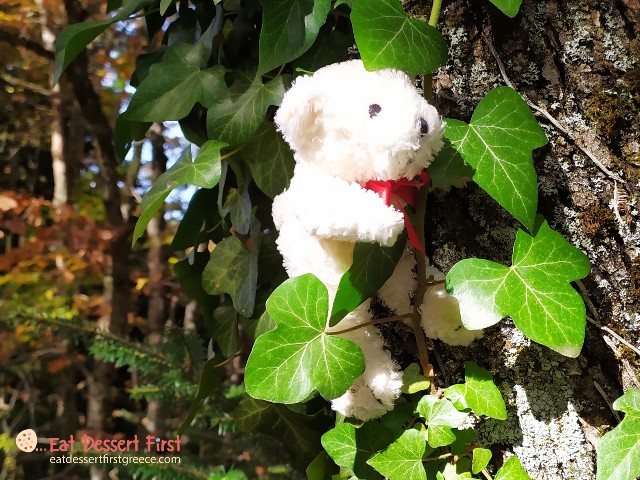
As for sweets, health and calories, it goes like this: An average person walking at medium speed for an hour will burn approximately 250-300 calories. The medium-sized piece of pasta frola (or fruit tart) with Cornelian cherries jam we ate has 360 calories. So, if you have a sweet tooth, you’ ve got one more reason to exercise! And walking is the easiest sport, all you need is comfortable clothes and a pair of sport shoes.

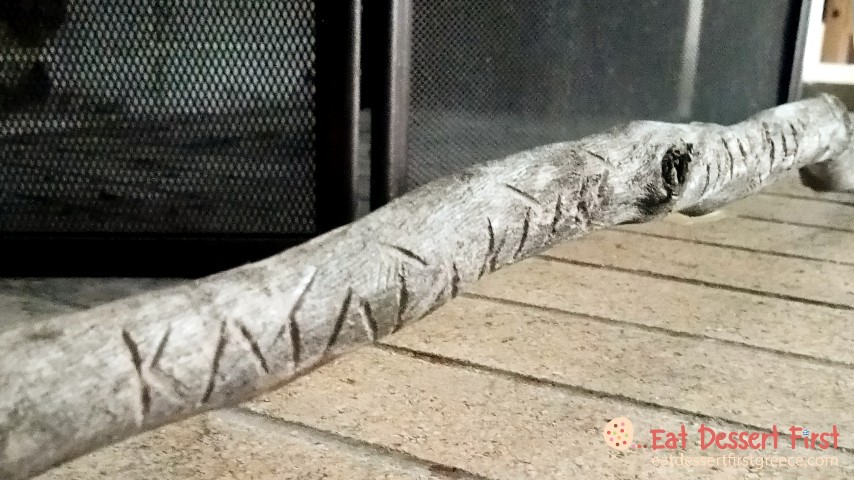
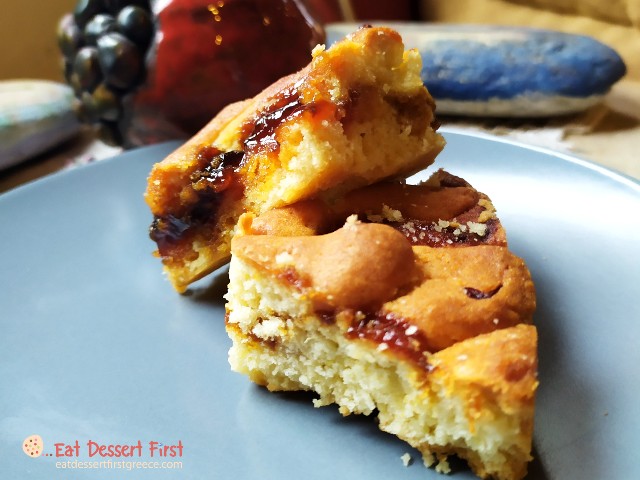
So we did, we put on our sportswear and walked from Pezoula village to Plastiras Lake. This artificial lake was the vision of Nikolaos Plastiras, a general and three-time prime minister of Greece. He was born in Morfovouni, one of the largest villages in the area, at an altitude of 800 meters, overlooking the plain.
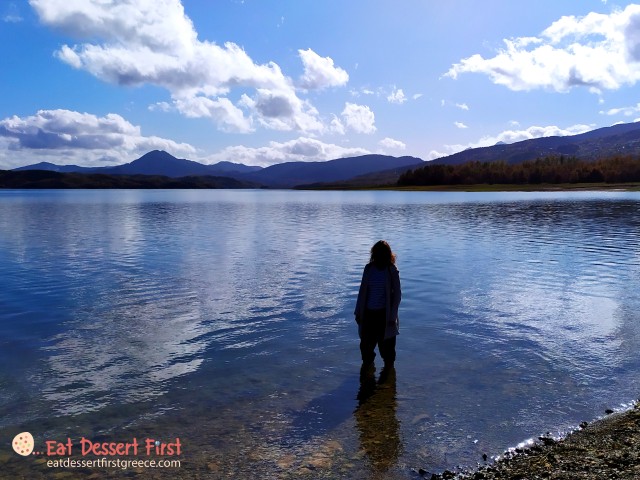
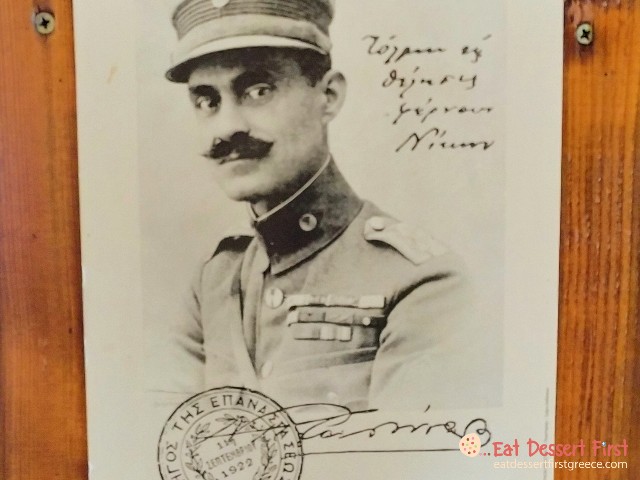
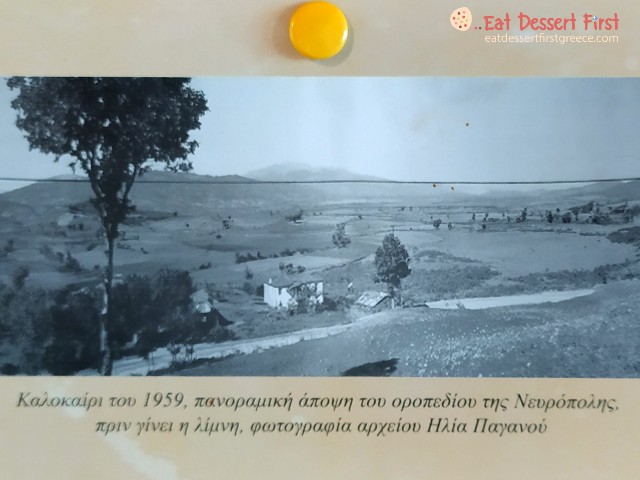
In 1928 Nikolaos Plastiras conceived the idea of constructing a barrier on the tributary of Acheloos river, Megdopas or Tauropus river. The project was realised much later, in 1960 when Konstantinos Karamanlis was prime minister. The lake remains until today one of the greatest projects in the country, as thanks to it thousands of acres of the Thessalian plain are irrigated, Karditsa and many other communities are watered, and the hydroelectric power plant operates.
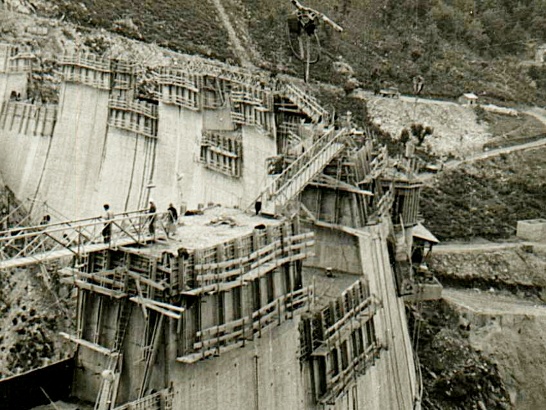
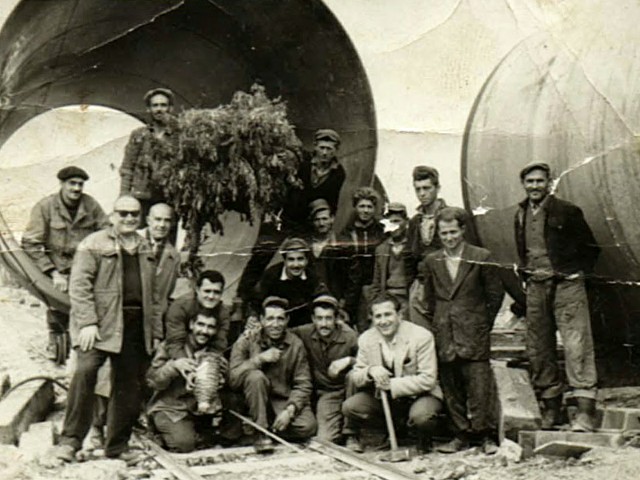
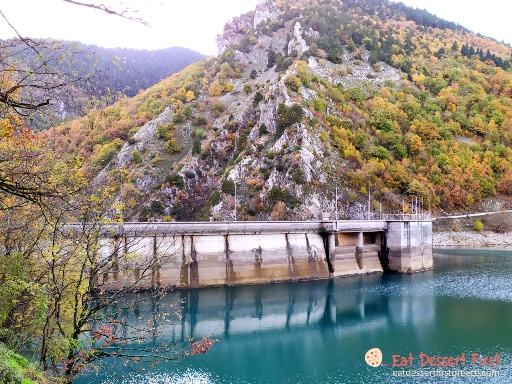
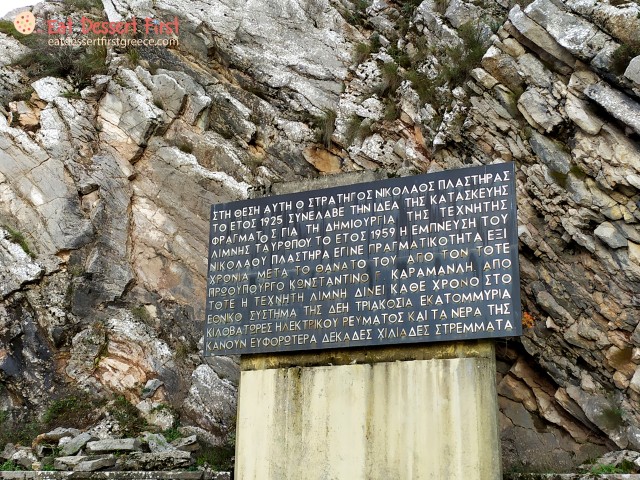
We also learnt that the space where today the serene lake is, used to operate as an “invisible” airfield for the Allied forces during WWII, that the Germans never traced. It is said that the residents of nearby villages would hide the air route with trees during the day and at night they would light fires so that the airplanes of the Allies would find it. That way, the Germans never identified it.

Over time the lake filled with water and got integrated into the landscape in a harmonious way, as if it had always been there. Today one can try various water sports there. We chose water biking in order to explore the lake from as close as possible! A unique experience, and at the same time a great workout. With 45 minutes of water biking we burnt the jam we had for breakfast -and we had eaten a lot!
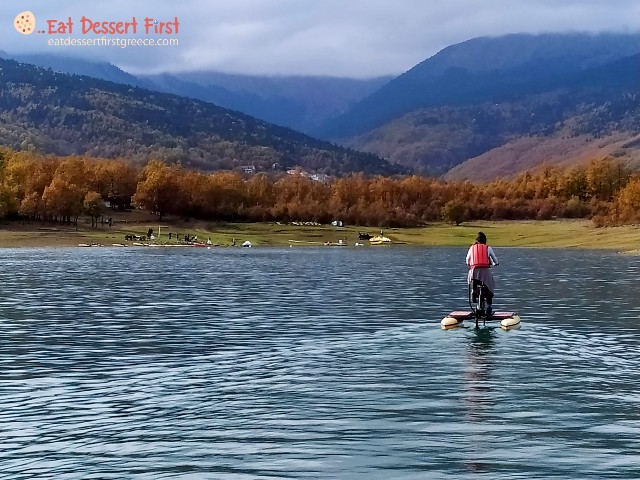
Another landmark we could’t miss is the Waterfall of Anthochori village. At the entrance of the hiking path we saw the traditional water mill. We were told that the mechanism has two stones that move with the rushing force of the water and grind the cornmeal. We bought aromatic oregano, a perfect souvenir to remind us of the place we got to know.


We continued our fascinating journey through the gorge, between high rocks and lush nature, plane trees, firs, and even our favorite Cornus mas trees. We reached the waterfall quite easily, after a half-hour hike. We walked by the river, crossed bridges and streams and admired the beauty of Greek nature, that never ends.



We also continued higher, following the B20 hiking path… and reached the clouds! The view was breathtaking, the altitude high and the quietness absolute.


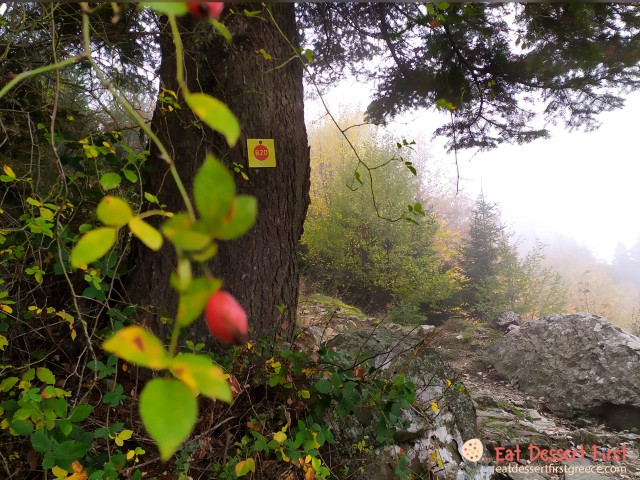
Last stop of our sweet trip, the Holy Monastery of Panagia Pelekiti. The monastery stands at a 1400 meters altitude, hanging off a steep slope of Agrafa mountains for five centuries. Its cells are carved in the rock; inside them lived monks and also during the Turkish occupation a secret school operated on the premises. The monks played a crucial role in the Greek Revolution of 1821, supporting the liberation of the nearby mountain village Karitsa.
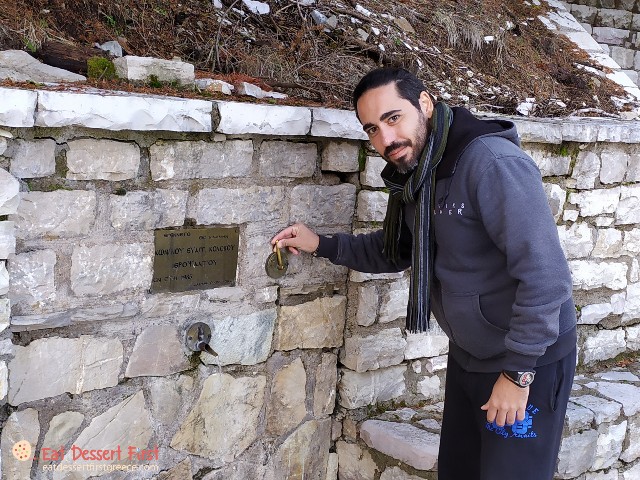
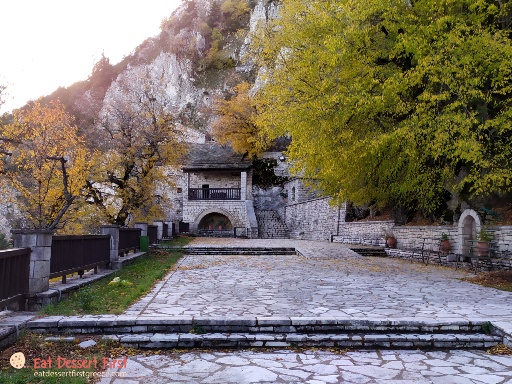

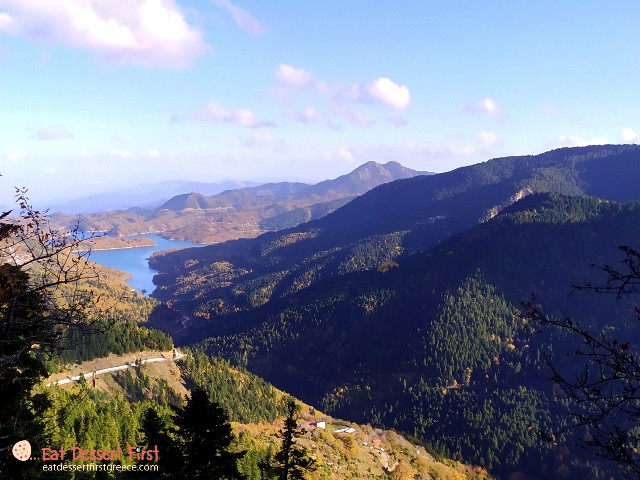
The monastery’s building has been declared a preserved historical monument and has been awarded by the European Union for its architectural promotion.

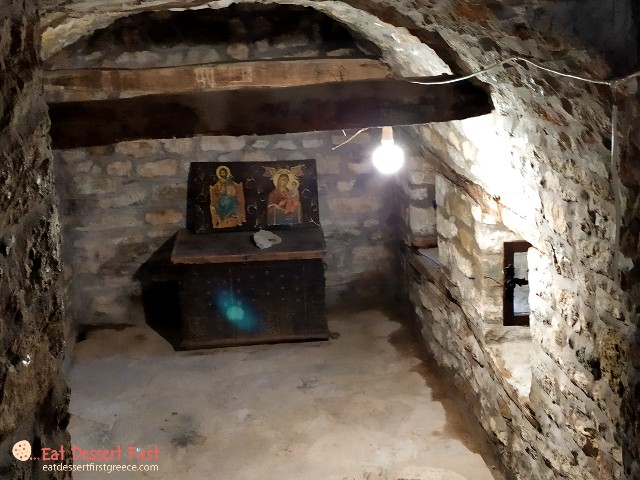
A small icon of Holy Mary holding Jesus in her arms was kept in the monastery, but sadly it has been stolen. In a historical excerpt of 1929 we read that the icon was very small-sized, 4 centimeters high and 3 centimeters wide, painted in Raphaelic style reminiscent of Renaissance. The date 1654 was written on it. It was adorned with red stones, most of which had already been stolen by the time of this historical record. Its silvered frame had angels carved on it.
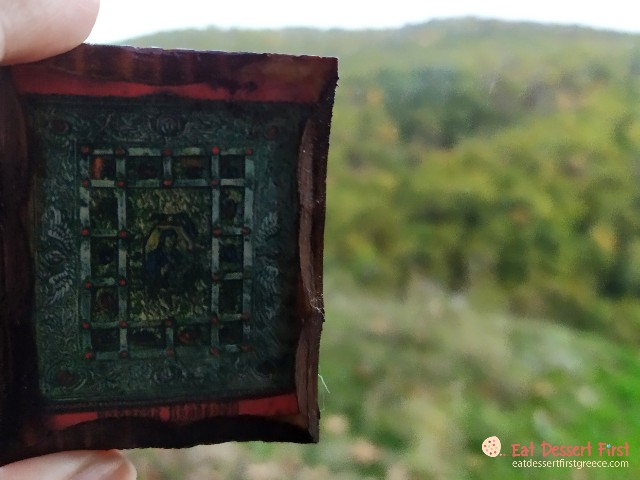
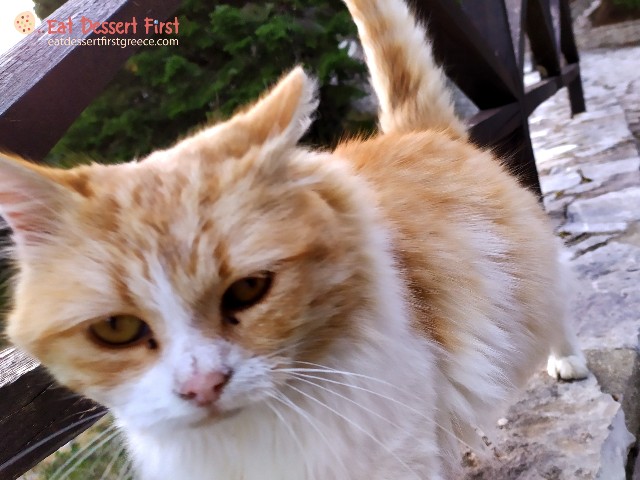

Thanks to our activities in nature and sightseeing in the Lake Plastiras’ area, we got a taste of hiw life is in quiet places, among fresh air, high trees and serene waters. We got jealous of the locals for their tranquility, the authentic food we enjoyed all these days and all the nice occupations.


Just before leaving, we paid a visit to Karditsa and tried one more dessert. Combining traditional flavor and contemporary technique, it was exactly what we needed to prepare for the return to our bustling everyday life!
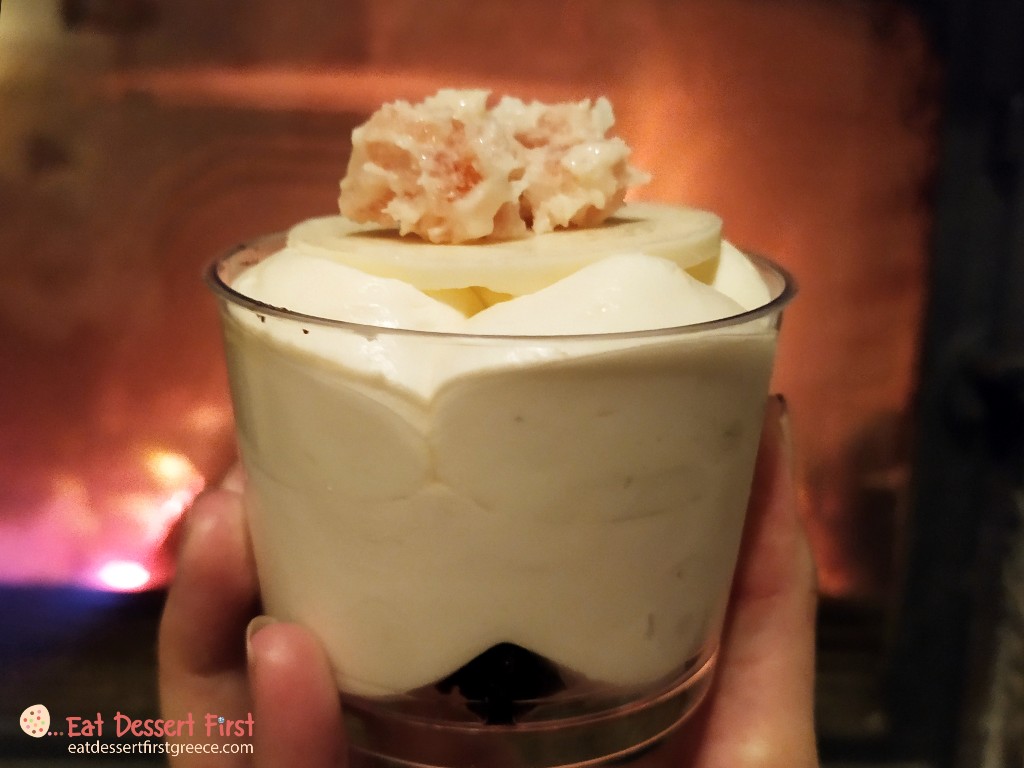
Be the first one to read our new articles!
Follow us by submitting your email into the box you will find if you scroll down our page, so that you receive each new article by email as soon as it is online. Don’t forget to confirm your subscription, in the email you will receive! 🤗 For wordpress bloggers like ourselves, just press the follow button. Follow us on Instagram (@eatdessertfirstgreece) and follow our new Facebook page (eatdessertfirstgreece) to see our posts with our favourite desserts… and much more!


Love the work, both with the lens and the pen…Keep shining
LikeLike
Thank you very much! Greetings from Greece!
LikeLike
Great post! The pictures are lovely. 🙂
LikeLike
Thank you very much for your kind words! 🙂 🙂
LikeLiked by 1 person
I love the fact that you add in historical information in your posts! Also, the pictures are beautiful!
LikeLike
Thank you very much! 💖💖🙏🙏
LikeLiked by 1 person
Wow you weren’t kidding! Looks like a beautiful place and a wonderful trip!
I am a chef and I loves sweets so I also really enjoy your foodie photos!
-Maxwell
#keepthegoodvibesalive!!
LikeLike
Thank you so much chef!! ❣️❣️🙏🙏
LikeLiked by 1 person
It looks like a beautiful trip! And oh my gosh, those dogs were so cute!!
LikeLiked by 1 person
Thank you so much! Come to visit our country! 🙂💜🙏
LikeLike
Would you be offended if I started a food blog? Would it seem like I was copying you?
LikeLike
🙂🙂🙂💜💜
LikeLiked by 1 person
I’m taking that as a no. Thanks.
LikeLike
#INSPIRING 🙂 Thank You !!!!!
LikeLiked by 1 person
Thank you so much! 🙂
LikeLike
I love that you balance your love of sweets with health and fitness. I think too often we choose one over the other. Thank you for sharing your insightful road trip!
LikeLiked by 1 person
We are very happy that you enjoyed our article and for your spot on comment! Thank you so much!!
LikeLike
So the places you visited are not the park that sells tickets to visitors? In our country any good sceneries are controled by the company or government for making profits, and what we get is more bad mood than real joy, haha! By the way, one needs to eat whatever he likes, sweet, sour, salty, spicy, bitter, etc.
LikeLike
Thank you very much for your comment! Yes the lake and its surrounding are all free! We agree, every taste has its own value and joy!! Thanks a lot!
LikeLike
Been to Greece a few times, but have never gone here. Going to have to add Lake Plastiras to my bucket list as soon as we can travel again!
LikeLike